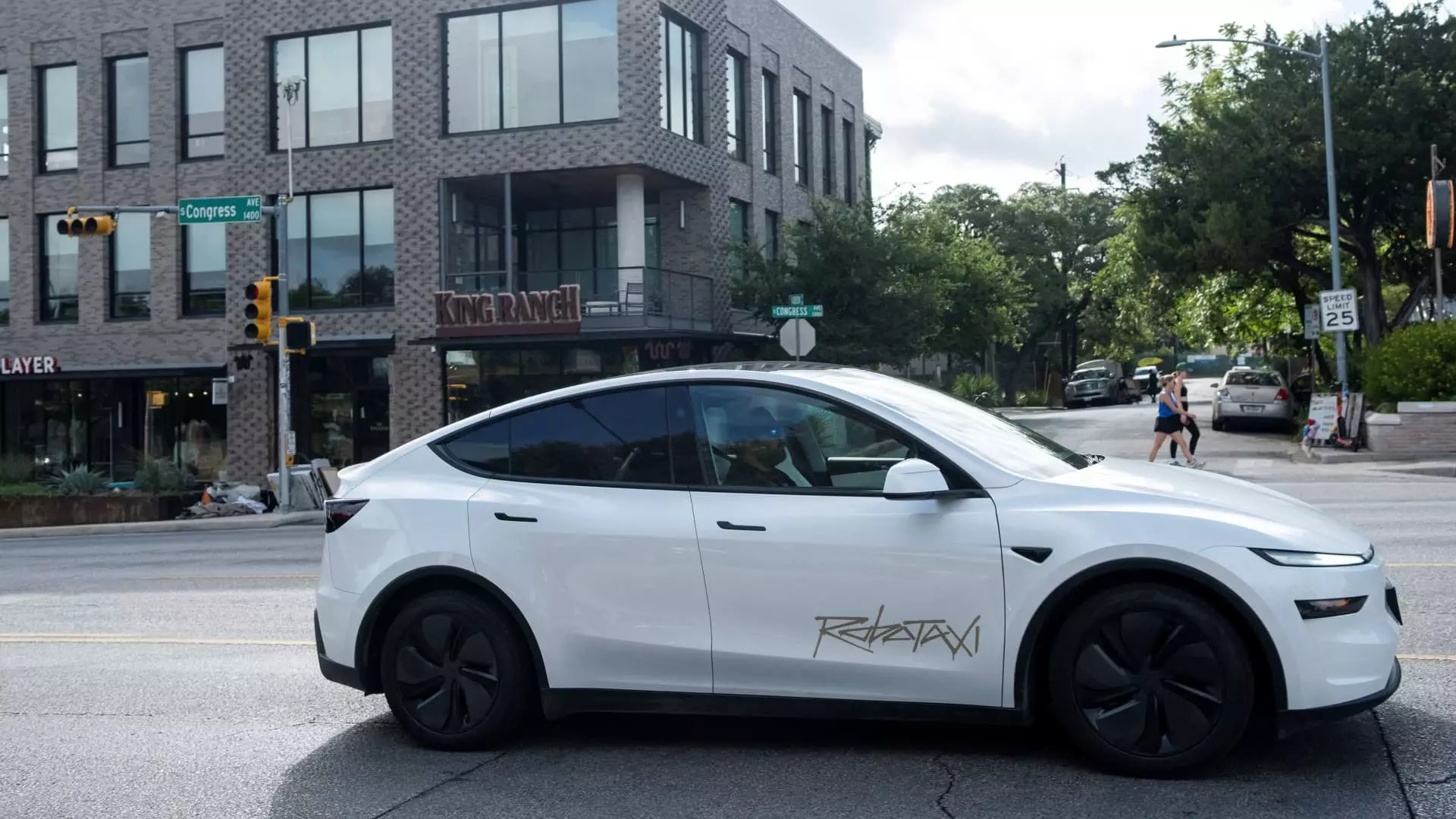In a bold stride towards an autonomous future, Tesla recently initiated its robotaxi service in Austin, Texas, albeit with a rollout tailored for a select group of invited users. This unveiling, celebrated as a milestone in electric vehicle innovation, has quickly transformed into a sphere of controversy following alarming reports of erratic driving patterns exhibited by the autonomous vehicles. Onlookers captured chaotic scenes, where Tesla’s robotaxis not only committed traffic infractions but also reacted unpredictably to their surroundings. A singular video, which garnered widespread attention, depicted a robotaxi traveling against the flow of traffic, effectively raising concerns over the operational reliability and safety standards of the highly anticipated technology.
The Regulatory Response: A Watchful Eye
In the wake of these troubling incidents, the National Highway Traffic Safety Administration (NHTSA) sprang into action, confirming their awareness of the videos circulating on social media. The regulatory body’s intervention underscores the delicate relationship between tech innovation and safety oversight. The NHTSA does not engage in pre-approval of emerging technologies; instead, it mandates that manufacturers like Tesla ensure compliance with existing federal safety standards. This approach has raised eyebrows, particularly given Tesla’s checkered history with safety investigations related to its Full Self-Driving (FSD) technologies. The prospect of an investigation into the robotaxi incidents adds another layer of tension in a landscape already fraught with scrutiny.
Contradictions in Automation Promises
Elon Musk’s vision for a fully autonomous Tesla has long been characterized by ambitious timelines that have since fallen short. As early as 2015, Musk was proclaiming that Tesla vehicles would achieve full autonomy within three years. Fast forward to today, and the dream of a seamless, driverless experience remains elusive, with the recent launch falling considerably short of expectations. The reality is starkly different from the promises made, sparking a serious examination of the feasibility of such technology and its rollout strategy. While Tesla experienced an 8% surge in stock prices following the pilot’s launch, there is an unsettling feeling amongst shareholders, highlighted by the juxtaposition of the company’s aspirations and its current operational reality.
The Competitive Landscape of Autonomous Driving
As Tesla grapples with its public image and regulatory pressures, competitors like Waymo stand as stark reminders of the pace at which innovation continues to evolve in the realm of autonomous driving. Waymo recently celebrated a milestone of over 10 million paid rides, signaling a stark difference in operational success compared to Tesla’s limited pilot. Additionally, companies in China, such as Baidu’s Apollo Go and Pony.ai, are actively deploying commercial robotaxi services with successful results. This growing competition places immense pressure on Tesla, forcing the company to reevaluate its trajectory in the autonomous vehicle domain.
The Broader Implications for Autonomous Technology
The recent upheaval surrounding Tesla’s robotaxi service illuminates larger questions about the readiness of autonomous systems for mainstream use. While the promise of autonomous vehicles holds tremendous potential for reshaping urban mobility, incidents like those witnessed in Austin raise substantial concerns regarding the algorithms and decision-making processes employed by such systems. Accountability issues arise when technology meant to enhance safety instead poses risks; this conundrum invites cautious optimism about the future of automation in transportation.
Moreover, the implications of this turbulent launch extend beyond Tesla, reflecting a critical juncture for the entire automotive industry as it speeds towards an increasingly automated future. Stakeholders, from regulatory bodies to consumers, must balance the allure of innovation with the imperative of safety, ensuring that the transition toward autonomous vehicles is far more than mere lip service. As we witness the development of robotaxis unfold, one thing remains certain: the journey toward true autonomy promises to be as fraught with challenges as it is rich in possibilities.

